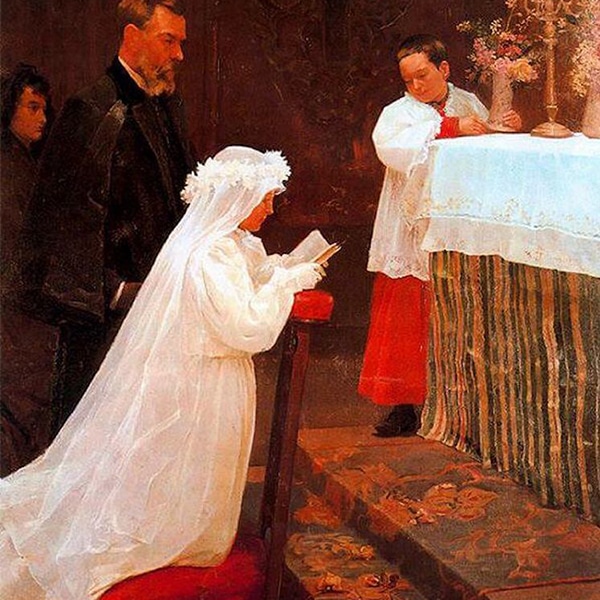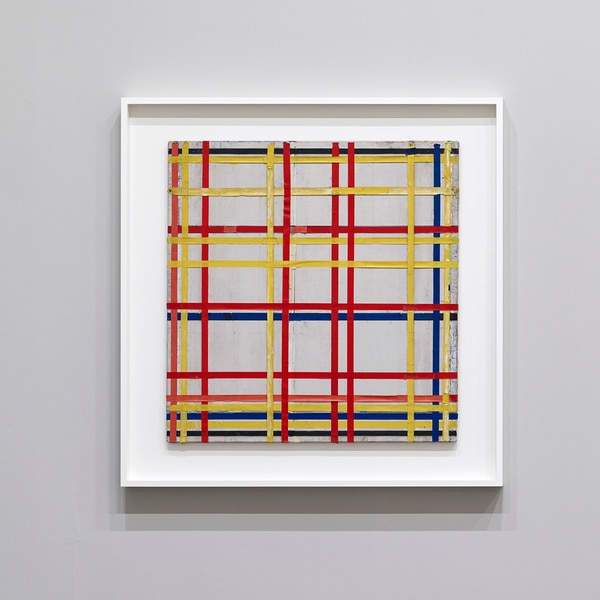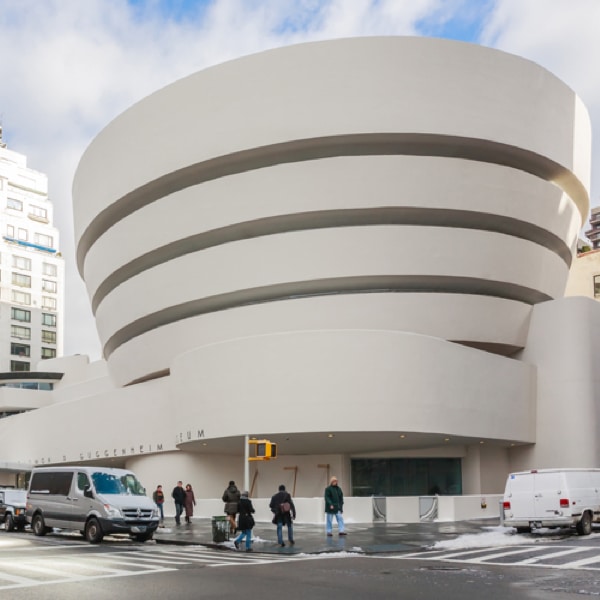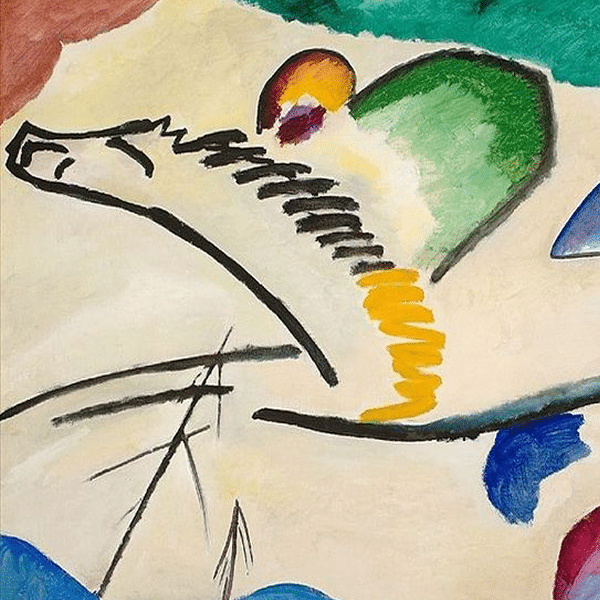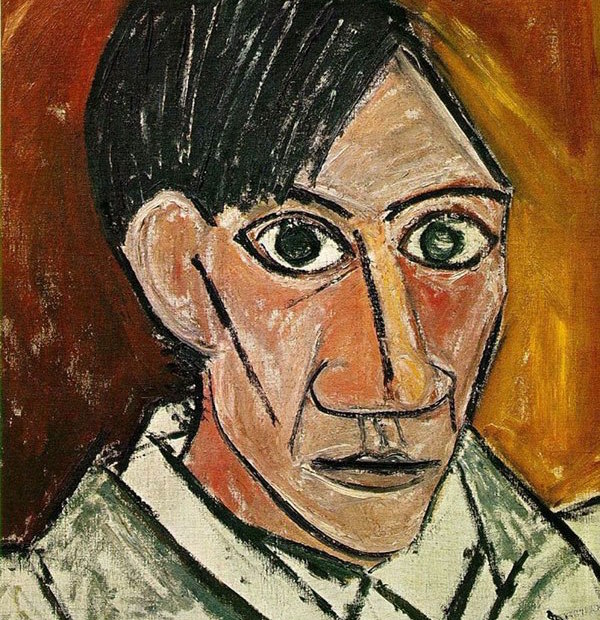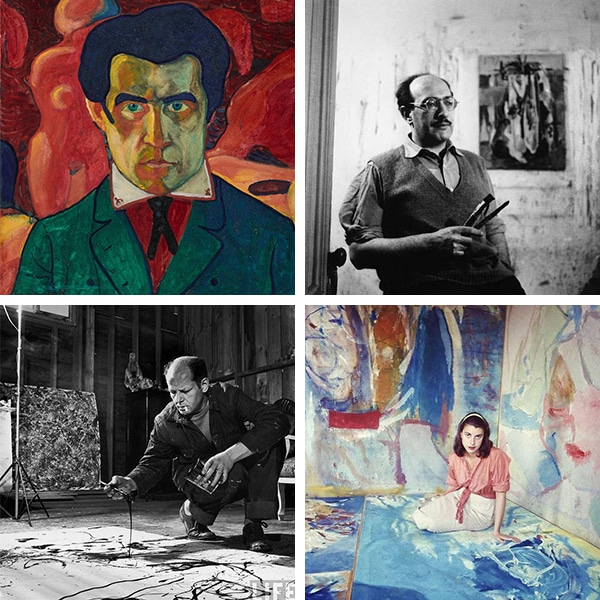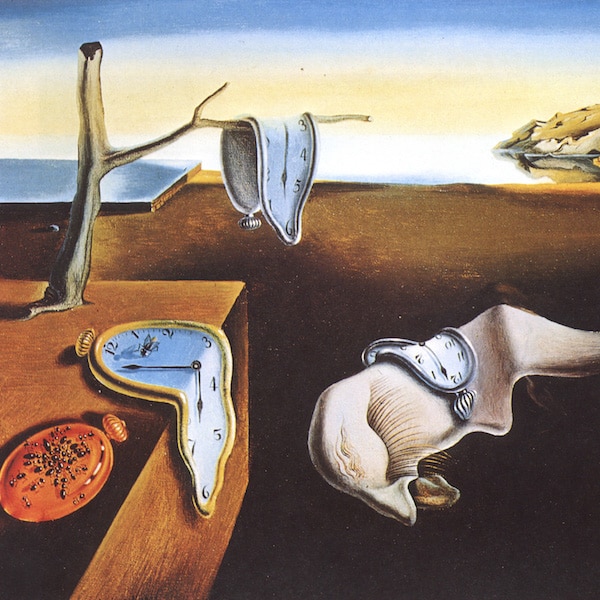
Throughout the 20th century, several styles of avant-garde art helped shape modern art. While many of these genres—including subconscious-based surrealism and energetic abstract expressionism—predominantly favored paintings, the Bauhaus movement encompassed a wide array of mediums, materials, and disciplines.
Ranging from paintings and graphics to architecture and interiors, Bauhaus art dominated many outlets of experimental European art throughout the 1920s and 1930s. Though it is most closely associated with Germany, it attracted and inspired artists of all backgrounds. Today, its influence can be found in art and design all over the world, whether within the walls of a museum or on a suburban street.
What is Bauhaus?

The Bauhaus Logo (Photo: Wikimedia Commons)
Bauhaus—literally translated to “construction house”—originated as a German school of the arts in the early 20th century. Founded by Walter Gropius, the school eventually morphed into its own modern art movement characterized by its unique approach to architecture and design. Today, Bauhaus is renowned for both its unique aesthetic that inventively combines the fine arts with arts and crafts as well as its enduring influence on modern and contemporary art.
History

Photo: Susanlenox (Public Domain)
In 1919, German architect Walter Gropius established Staatliches Bauhaus, a school dedicated to uniting all branches of the arts under one roof. The school acted as a hub for Europe's most experimental creatives, with well-known artists like Josef Albers, Wassily Kandinsky, and Paul Klee offering their expertise as instructors.
Bauhaus as an educational institution existed in three cities—Weimar (1919 to 1925), Dessau (1925 to 1932), and Berlin (1932 to 1933).
Weimer
Weimar, aka State Bauhaus in Weimar, was where Gropius laid the groundwork for Bauhaus to come; it's where he established ideals that would be considered visionary for the time. Art, according to his manifesto and the program, should serve a social role and there should no longer be a division of craft-based disciplines.
At Weimar, the “stage workshop” was an important part of the education. It was directed by Lothar Schreyer from 1921 to 1923 and then by Oskar Schlemmer from 1923 to 1925. It brought together visual and performing arts and stressed an interdisciplinary approach.
Dessau
Dessau was considered the hotspot in the heyday of Bauhaus. It arose after the politically motivated close of Weimar. During this time, it set forth on the path of designing new industrial products for mass consumption. (Most of the products and designs that are well-known today came from Dessau.) It was also here that the famous Bauhaus Building was planned and built by Gropius.
The second director of Dessau was Swiss architect Hannes Meyer, whose design philosophy was: “1. sex life, 2. sleeping habits, 3. pets, 4. gardening, 5. personal hygiene, 6. weather protection, 7. hygiene in the home, 8. car maintenance, 9. cooking, 10. heating, 11. exposure to the sun, 12. services – these are the only motivations when building a house. We examine the daily routine of everyone who lives in the house and this gives us the functional diagram – the functional giagram and the economic programme are the determining principles of the building project.”
This iteration of Bauhaus was dissolved on September 30, 1932.
Berlin
Berlin was the last phase of Bauhaus. Due to mounting pressures from the Nazis and cutbacks in funding, there was limited work done during this time. The move to Berlin happened after the closure of Dessau, and Bauhaus masters and students reconvened in October 1932 out of an abandoned telephone factory. By April 11, 1933, however, the premises were searched and closed by the police and SA.
The teaching staff dissolved the Bauhaus in July 1933. But even after facing permanent closure, the influence and aesthetic of the school persisted, culminating in the Bauhaus movement.
Style of Bauhaus
The style of Bauhaus is commonly characterized as a combination of the Arts and Crafts movement with modernism, as evident in its emphasis on function and, according to the Tate, its “aim to bring art back into contact with everyday life.” Thus, typical Bauhaus designs—whether evident in painting, architecture, or interior design—feature little ornamentation and a focus on balanced forms and abstract shapes.
Bauhaus Art
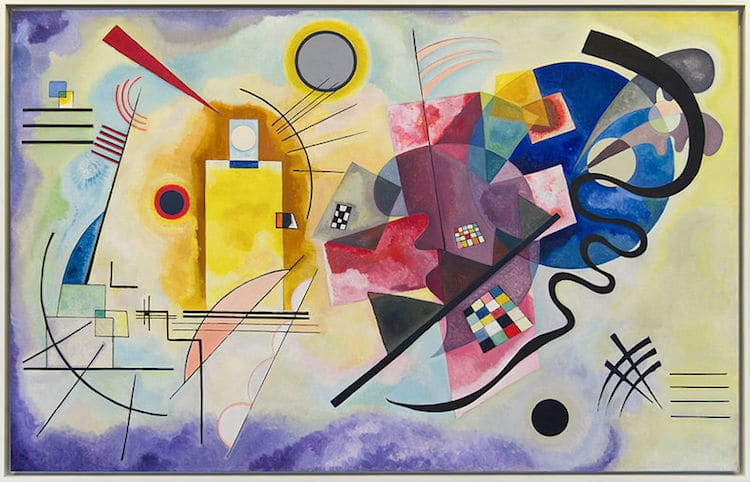
Yellow-Red-Blue (1925) by Wassily Kandinsky (Photo: Musée national d'art moderne via Wikimedia Commons)
In art, this emphasis on function is apparent in the balanced compositions of abstract paintings by Bauhaus artists like Wassily Kandinsky and Paul Klee. Undoubtedly inspired by architecture, the paintings typically pair flat planes with overlapping shapes to suggest dimensionality.
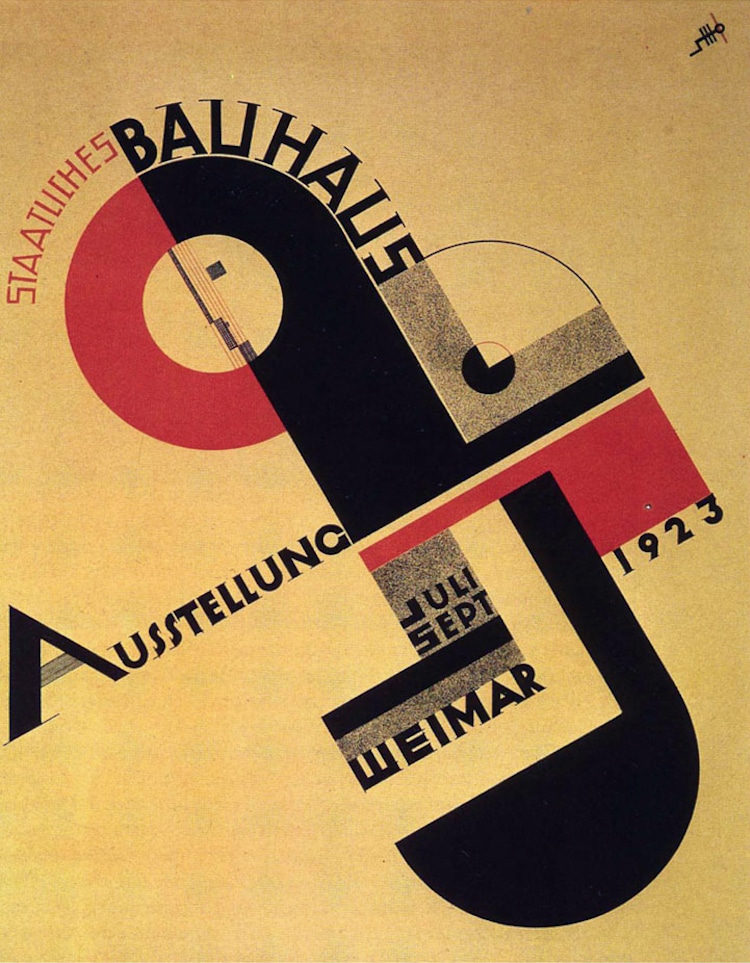
Bauhaus Exhibition Poster (1923) (Photo: iv toran [Public Domain])
Bauhaus Architecture
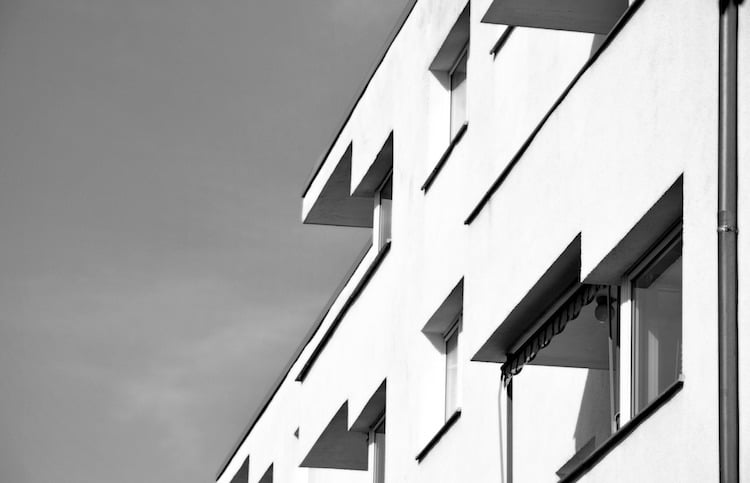
Photo: KlausHausmann
Similar to Bauhaus art, architecture in this style is characterized by harmoniously balanced geometric shapes and an emphasis on function.

Fallingwater by Frank Lloyd Wright (Photo: Carol M. Highsmith via Wikimedia Commons)
Featuring open plans and lots of glass, it is inspired by the simple yet polished look of the American Arts and Crafts movement—a genre popularized by master architect and Prairie School pioneer Frank Lloyd Wright.
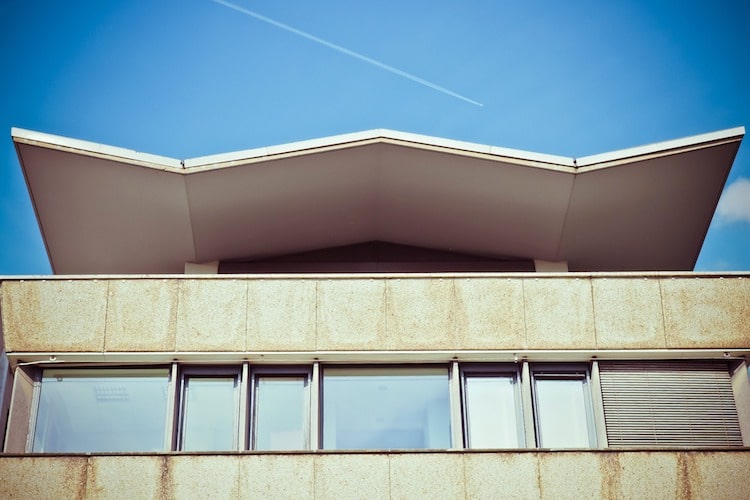
Photo: MichaelGaida
Furthermore, this modern architecture movement heavily inspired the look of mid-century modern homes, which borrow the clean lines and functional design of Bauhaus buildings.
Bauhaus Interior Design
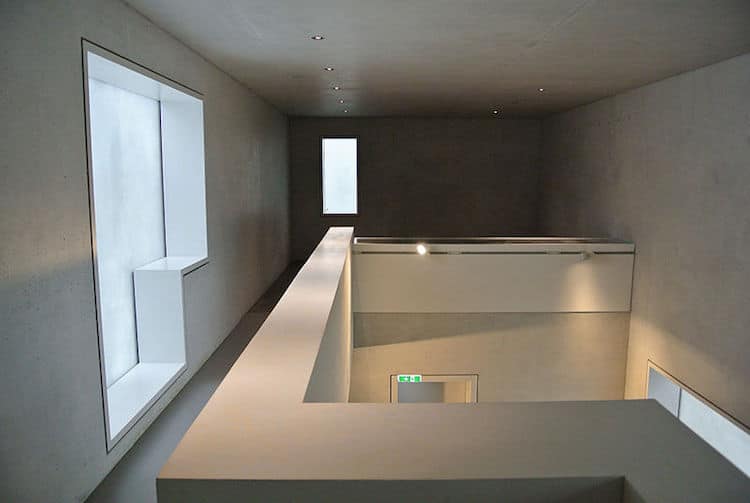
Photo: Spyrosdrakopoulos via Wikimedia Commons
Bauhaus interiors are renowned for their simplicity and openness. The iconic furniture that did adorn these spaces was always highly intentional. Chairs, for instance, were reimagined by Marcel Breuer, who was the head of the cabinet-making workshop at the Bauhaus in Dessau. He wanted to create minimalistic and mass-producible pieces that were made mostly of metal. This resulted in the foldable, lightweight Wassily Chair—named after the painter Wassily Kandinsky.
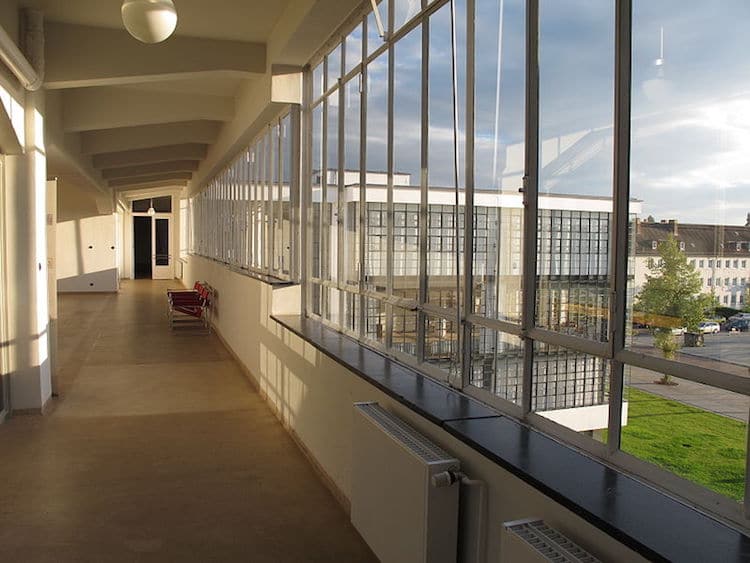
Photo: PeterDrews via Wikimedia Commons
Although subtle, textiles also played a role in Bauhaus interior design. In fact, students studied color theory as well as weaving in the textile workshop. Their pieces, as well as the occasional wall painting, provided some levity to the otherwise industrial rooms.

Photo: pyrosdrakopoulos via Wikimedia Commons
Legacy

Bauhaus Dessau (Photo: Mewes via Wikimedia Commons)
Today, Bauhaus is often credited as the catalyst for modern architecture and furniture and as an important influence on mid-20th century painting and sculpture. Some buildings—including Bauhaus Dessau, a UNESCO World Heritage Site—have been turned into tourist destinations and house museums, while many major modern art museums incorporate the works of art into their permanent displays and popular exhibitions.
This article has been edited and updated.
Related Articles:
Delightful Birdhouses Modeled After Historic Architecture
Top 6 Sites for Interior Design Inspiration
This Virtual Library Card Grants Free Access to 2,000+ Architecture Books
Expansive Catalog of Paintings by Hilma af Klint Is a Tribute To the Pioneering Artist


































































